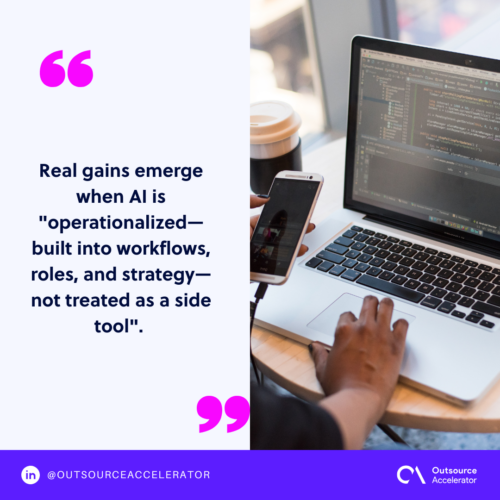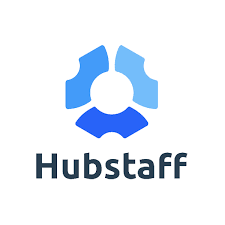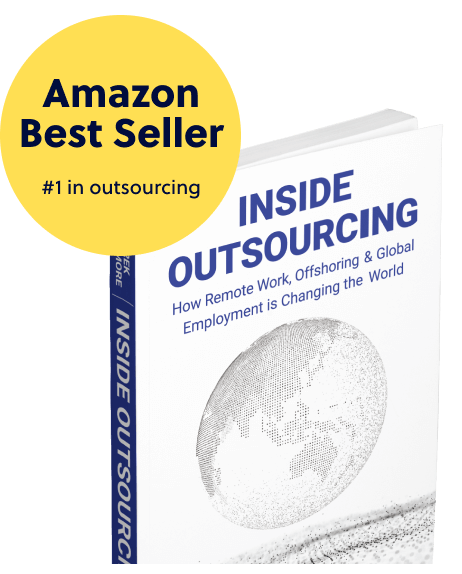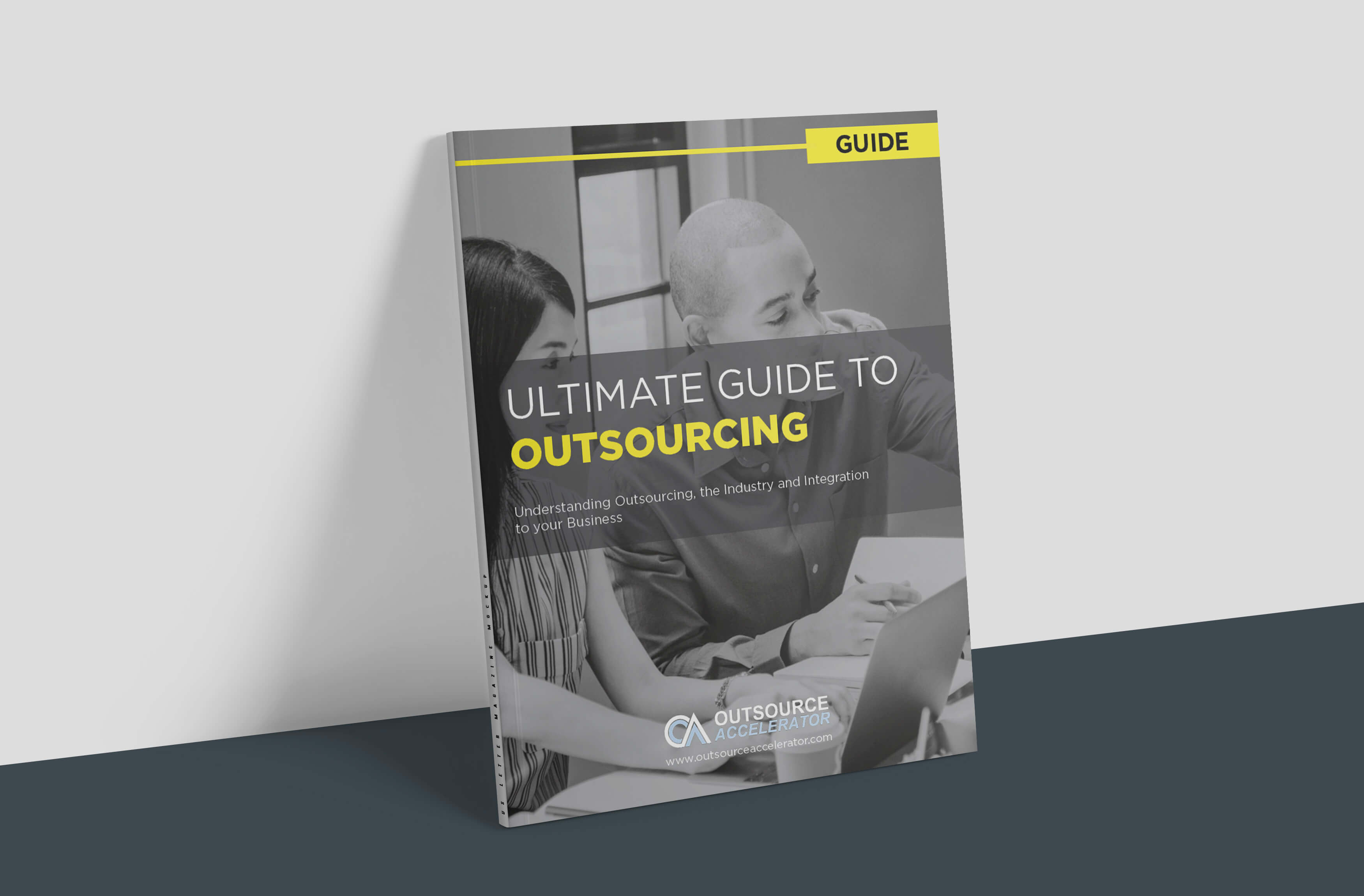AI adoption: Strategies for unlocking real gains in your organization

The buzz around Artificial Intelligence (AI) has settled into a quiet hum of expectation, making its presence felt across nearly every industry. AI is no longer a futuristic concept; it’s a fundamental force shaping today’s business landscape.
While headlines might declare widespread AI adoption, the real story is often more nuanced. Many organizations are still grappling with how to translate that initial enthusiasm into tangible, measurable gains.
This article leverages insights from Hubstaff’s “AI Productivity Shift” panel. The panel consisted of:
- Dr. Gleb Tsipursky, Behavioral Scientist & Hybrid Work Strategist, as well as CEO of Disaster Avoidance Experts
- Phil Kirschner, Workplace Consultant, formerly from McKinsey and WeWork
- Nadia Harris, Founder of Remote Work Advocate
- Eryn Peters, Co-founder of the AI Maturity Index
It guides companies through strategic AI adoption, helping them unlock genuine productivity advantages beyond superficial use.
The current state of AI adoption: A tale of two halves
Despite the pervasive conversation around AI, there’s a fascinating disconnect between its reported use and its actual impact.
The panel highlighted a stark reality: 85% of professionals surveyed report using AI, yet it surprisingly accounts for a mere 4% of their total work time.
This isn’t just a small gap; it’s a telling chasm between engagement and deep integration.
The current nature of AI adoption is often shallow, limited to basic prompts in tools like ChatGPT. As Dr. Gleb points out, where users don’t even know they can switch models or use templates.
Eryn also argues that “adoption is much more holistic than just usage.”
It’s a “hype versus reality” scenario where enthusiasm for AI is high, but the concrete business cases and operationalized value are still elusive for many.

Barriers hindering impactful AI adoption
If the desire for AI is strong, what’s actually stopping companies from going deeper and achieving real gains?
The panel identified several critical barriers:
Lack of effective training and AI fluency
The most significant obstacle, according to Dr. Gleb, is simply that “people don’t know how to use AI effectively.”
Many are “just kind of poking around” unaware of advanced features like custom GPTs or how to train AI on their own data. This gap in practical AI fluency means the tools aren’t being used to their full potential.
Organizational fears and governance gaps
Companies are rightly cautious about data. Nadia highlighted that businesses are “really scared” about “how much data will be shared, where the data will be shared, how it is going to be stored.”
This lack of clarity on governance and compliance, especially with regulations like GDPR, leads to reluctance.
Phil also noted the “fear that it’s gonna take their jobs,” which can breed resistance within teams.
Enterprise inertia and tool access
Large organizations often find themselves struggling with AI adoption due to their sheer size and existing structures. Phil mentioned “red tape and legacy systems” and “tool delays” as significant hurdles.
While small startups can “move fast and break things,” larger entities are burdened by layers of auditing and compliance, slowing down their ability to test, adapt, and integrate AI quickly.
Productivity pressures and time constraints
Even with access to tools, many employees feel they lack the time to experiment.
Phil pointed out that “there’s so many pressures on productivity demand and people feeling burnt out.”
Without the “happy extra ten percent time” or the psychological safety to try new things, AI often remains sidelined, despite its potential to save time.
5 strategies for achieving real gains from AI adoption
Moving beyond these hurdles requires intentional strategy, transforming AI adoption from a hopeful experiment into a core operational advantage.
1. Define clear business cases and measurable outcomes
The panel repeatedly stressed that AI initiatives must be rooted in clear business value.
As Nadia emphasized, it’s crucial to ask: “How is it adding value? Let’s not just implement AI. Let’s think about why we’re doing it. What’s the business case?”
This means pinpointing specific problems AI can solve, like automating report formatting or streamlining customer research. It also requires setting clear metrics, such as hours saved or increased output.
2. Invest in comprehensive AI training and upskilling
Training isn’t just a perk; it’s the engine of effective AI adoption. Dr. Gleb advocates training people on how to use generative AI effectively and then letting them “figure out on their own use cases” like the claims staff who built Copilot agents to automate denial letters.
This approach fosters “AI fluency” which is increasingly a career edge. The report itself shows 20% of companies adjust salaries for AI skills.
Additionally, Eryn says that “soft skills, which are actually the hardest skills to learn,” should not be ignored.
Embracing a “lifelong learner” mindset and fostering curiosity are vital for continuous skill development in this evolving landscape.
3. Operationalize AI by integrating into workflows
Real gains emerge when AI is “operationalized—built into workflows, roles, and strategy—not treated as a side tool”.
Nadia shared how consolidating disparate data and automating entire workflows using AI in one smart tool “massively changed the way people work these days.” This frees people from repetitive tasks, allowing them to focus on creativity or final decisions.

4. Foster a culture of safe experimentation and collaboration
Building trust is paramount. Dr. Gleb stressed that companies need good policies that define how AI can be used, which tools are approved, and what’s off-limits.
A “useful AI policy” should emphasize AI “complement[ing] and augment[ing] human capabilities, not to replace labor.”
This creates psychological safety, encouraging employees to experiment without fear. Small companies inherently move faster due to a flatter structure and an openness to “move fast and break things,” an attitude larger organizations can learn from.
5. Rethink productivity metrics
The traditional view of productivity needs an overhaul.
Nadia passionately argued that productivity “is not subjective” and must be “measured properly.” It’s about “visible work versus efficiency” and “effectiveness versus effort.”
The goal isn’t just doing more, but “doing what matters efficiently.” This means focusing on outcomes, quality, and speed, recognizing that AI ratchets up the total workload that can be accomplished and enables “doing more with less.”
Managers must evaluate “the realistic workload or staff given the productivity improvements caused by AI.”
The future is AI-augmented
Successful AI adoption isn’t about merely installing new software; it’s about strategic, intentional integration that permeates workflows and culture.
Companies can unlock AI’s genuine power by addressing critical barriers like skill gaps, governance fears, and cultural resistance. This also involves focusing on measurable outcomes and continuous learning.
This commitment positions them to redefine operations and lead industries in AI-augmented productivity.
For further insights, you can download Hubstaff’s AI Productivity Shift report.







 Independent
Independent




